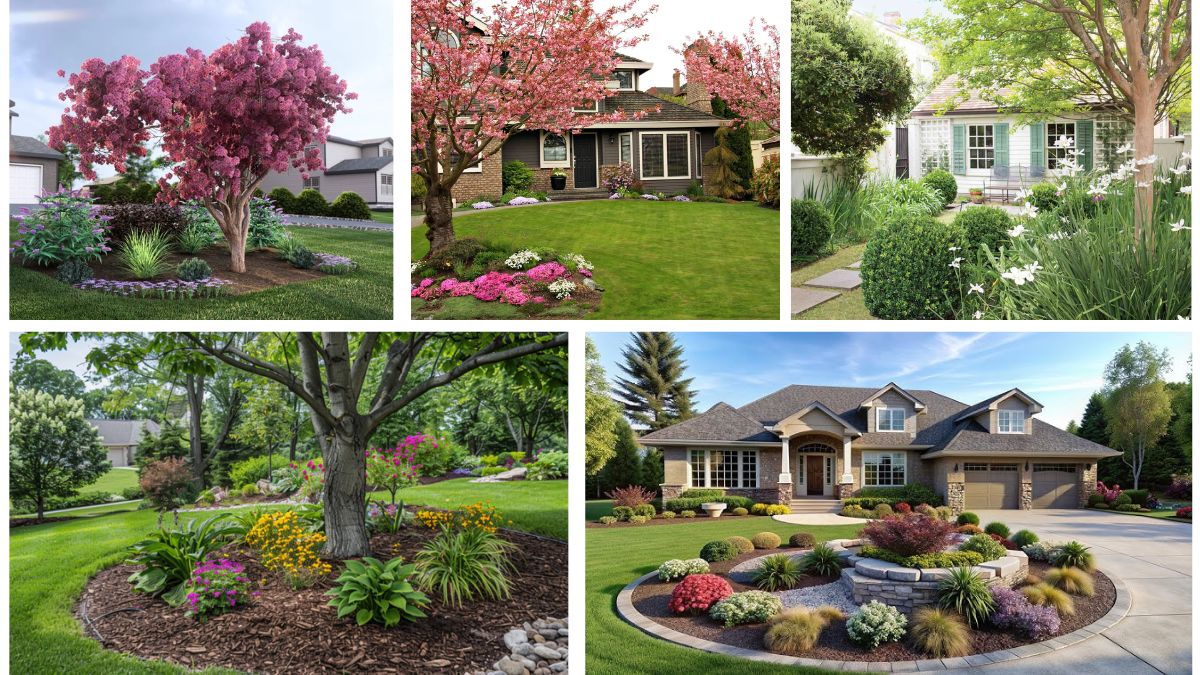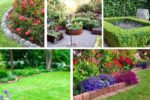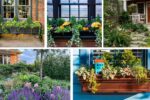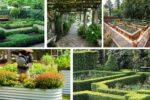When it comes to enhancing the beauty of outdoor spaces, few design elements are as striking and versatile as island flower beds. Unlike border beds that hug fences, walls, or walkways, island flower beds sit independently in open spaces, acting as captivating focal points. Much like an island in the middle of the sea, these flower beds stand alone in a lawn or yard, drawing the eye with their shape, plant arrangements, and creative design. Whether placed at the center of a front yard, in a backyard lawn, or in large open gardens, island flower beds transform ordinary green stretches into lively, dynamic landscapes.
In this article, we will explore the charm, functionality, and design strategies behind island flower beds. We’ll cover why they make such excellent yard centerpieces, how to plan and create them, the best plants to include, and creative ideas to make them truly unique.
Why Choose Island Flower Beds?
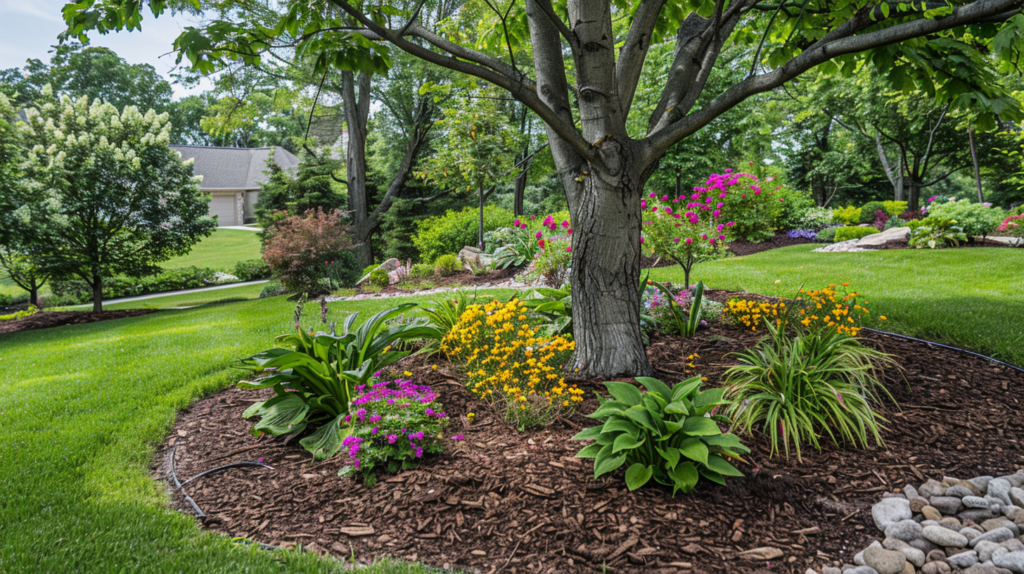
- Creates a Visual Focal Point
Island flower beds naturally grab attention. Their standalone placement makes them the “star” of the yard, pulling the viewer’s gaze toward the beauty of the design. - Adds Depth and Dimension
Flat lawns can look plain and monotonous. By adding an island flower bed, you create layers and dimensions that break the monotony and provide visual interest. - Offers Planting Freedom
Since island flower beds are not confined by walls or edges, they allow for 360-degree planting designs. This freedom makes it possible to showcase plants from all angles and create tiered effects that highlight different species. - Works in Small or Large Yards
While grand island flower beds can serve as bold centerpieces in large yards, smaller, simpler versions work equally well in modest gardens or front yards. - Encourages Creativity
Island flower beds give homeowners the freedom to experiment with shapes—circular, oval, kidney-shaped, or freeform—and to combine colors and textures in imaginative ways.
Planning Your Island Flower Bed
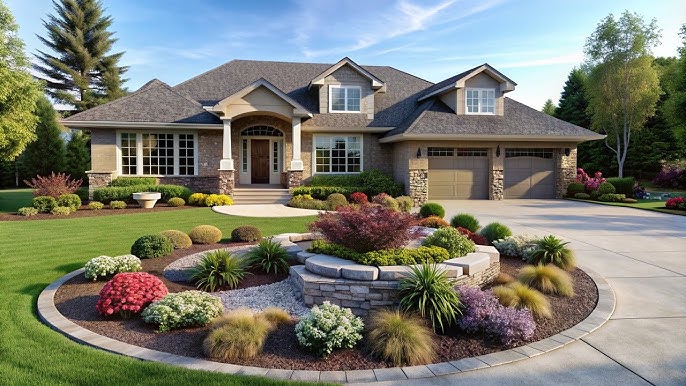
Creating an island flower bed requires thoughtful planning to ensure it complements your yard rather than overwhelming it. Here are some key steps:
1. Choose the Right Location
- Pick an open area of the yard where the bed can serve as a centerpiece without obstructing pathways or views.
- Consider sightlines from windows, porches, or driveways, so the bed is always in view.
2. Select the Shape
- Circular: Classic and symmetrical, ideal for formal gardens.
- Oval: Smooth and modern, great for contemporary designs.
- Kidney-shaped or Freeform: Adds a natural, flowing aesthetic.
3. Size Proportion
Ensure the bed’s size matches the yard. A too-small bed may get lost in a big lawn, while an oversized one can make a small yard feel cramped.
4. Soil Preparation
Dig out grass and amend the soil with compost and organic matter to provide a nutrient-rich base for healthy plants.
Plant Selection for Island Flower Beds
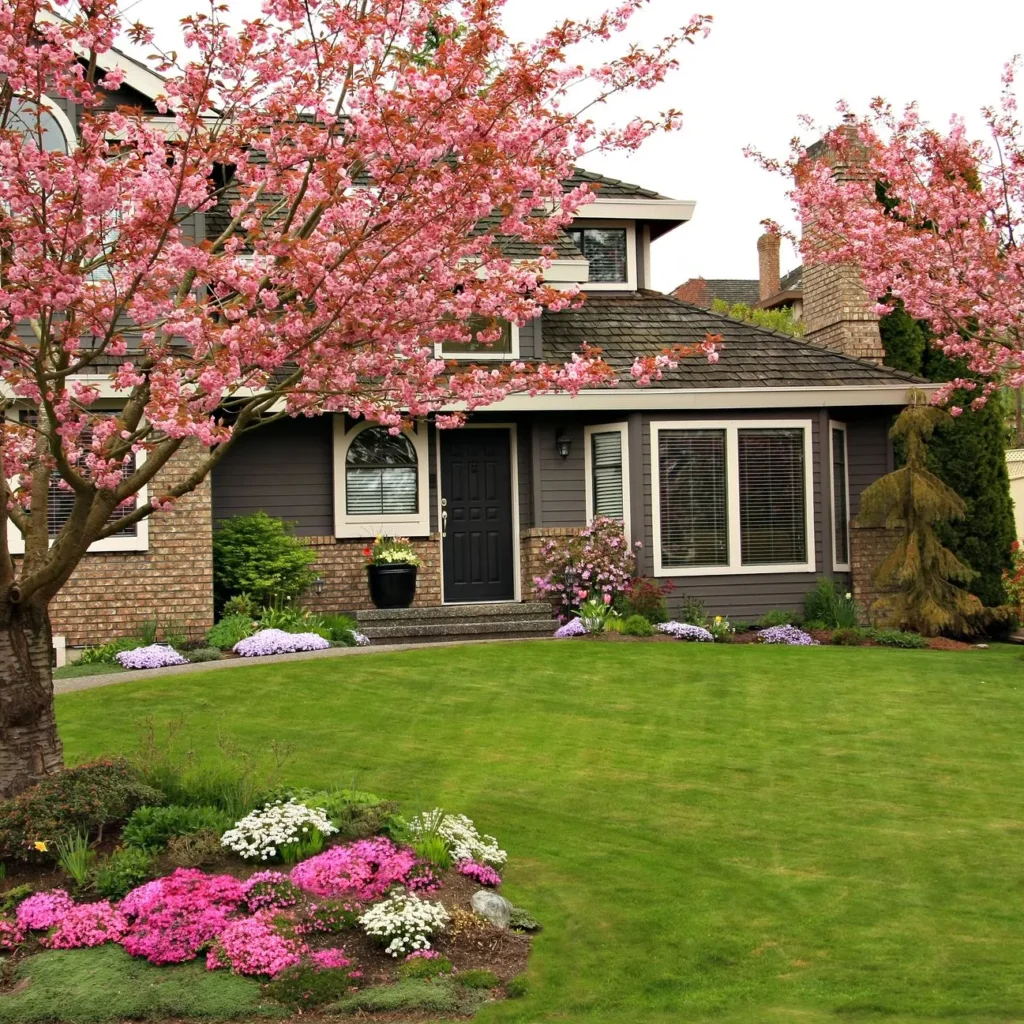
The success of an island flower bed largely depends on plant selection and arrangement.
1. Layering Technique
Planting should follow a tiered approach:
- Tall Plants in the Center: Use ornamental grasses, small shrubs, or taller perennials like hollyhocks or delphiniums to anchor the bed.
- Medium Plants in the Middle: Add colorful perennials such as coneflowers, black-eyed Susans, or salvias.
- Low-Growing Plants at the Edges: Use ground covers, annuals, or trailing plants like petunias or creeping thyme to soften the borders.
2. Color Themes
- Bold and Bright: Use vibrant hues like reds, oranges, and yellows for high-energy appeal.
- Cool and Calming: Blues, purples, and whites give a serene, soothing look.
- Monochromatic: Stick to shades of a single color for a modern, cohesive design.
3. Seasonal Interest
Choose a mix of plants that bloom in different seasons so your island flower bed remains attractive year-round. For example:
- Spring: Tulips, daffodils, hyacinths.
- Summer: Zinnias, marigolds, salvia.
- Fall: Chrysanthemums, asters, ornamental kale.
- Winter: Evergreen shrubs, ornamental grasses with seed heads.
4. Focal Plants
Every island bed should have one or two standout plants that serve as focal points, such as a dwarf ornamental tree (Japanese maple, flowering dogwood) or a striking shrub (hydrangea, rose bush).
Design Ideas for Island Flower Beds
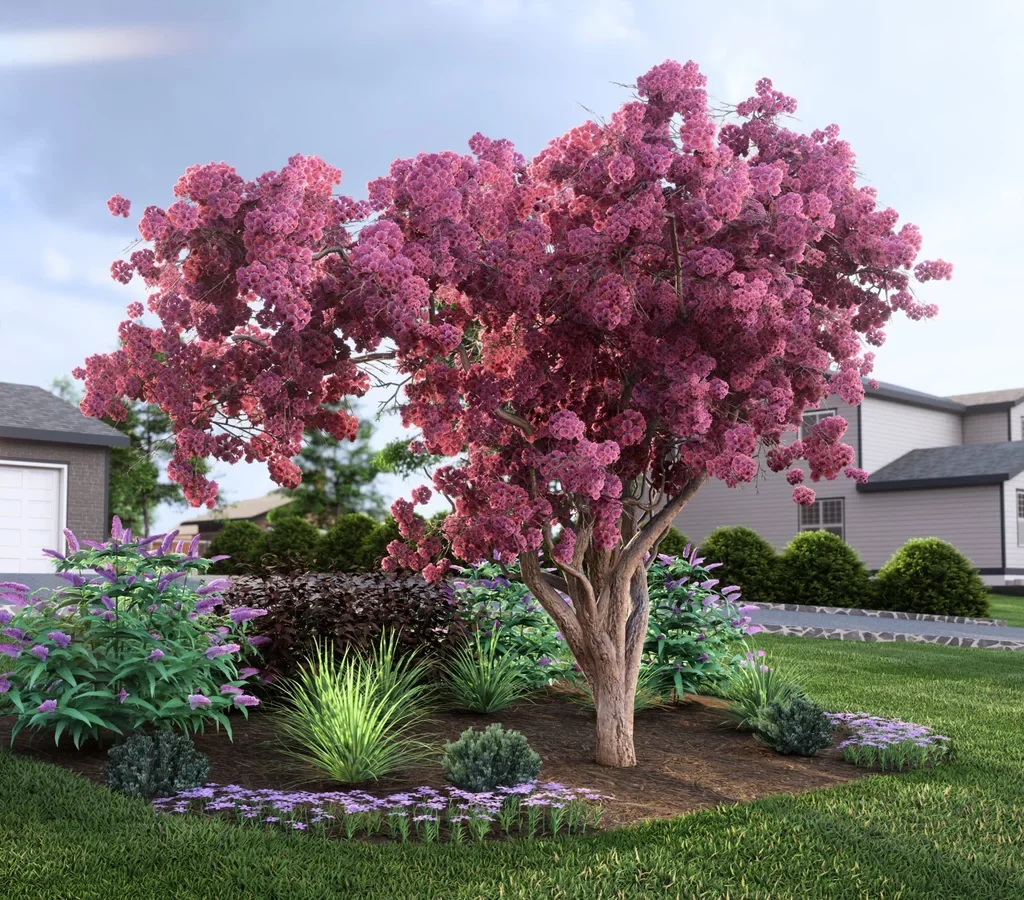
- Miniature Tree Islands
Plant a small ornamental tree in the center, surrounded by colorful flowers. This creates height and adds structure. - Whimsical Spiral Design
Arrange plants in a spiral pattern radiating from the center outward for a whimsical, eye-catching look. - Rock Accents
Incorporate decorative rocks, gravel, or boulders for a naturalistic design that adds texture and reduces maintenance. - Butterfly and Pollinator Islands
Fill the bed with pollinator-friendly plants like lavender, coneflowers, and milkweed to attract butterflies and bees, adding life to your yard. - Formal Symmetry
Use geometric shapes and symmetrical plant arrangements for a neat, formal garden look. Perfect for front yards and traditional landscapes. - Tropical Paradise
In warmer climates, choose tropical plants such as canna lilies, elephant ears, or hibiscus for a lush, exotic centerpiece.
Maintenance Tips for Longevity
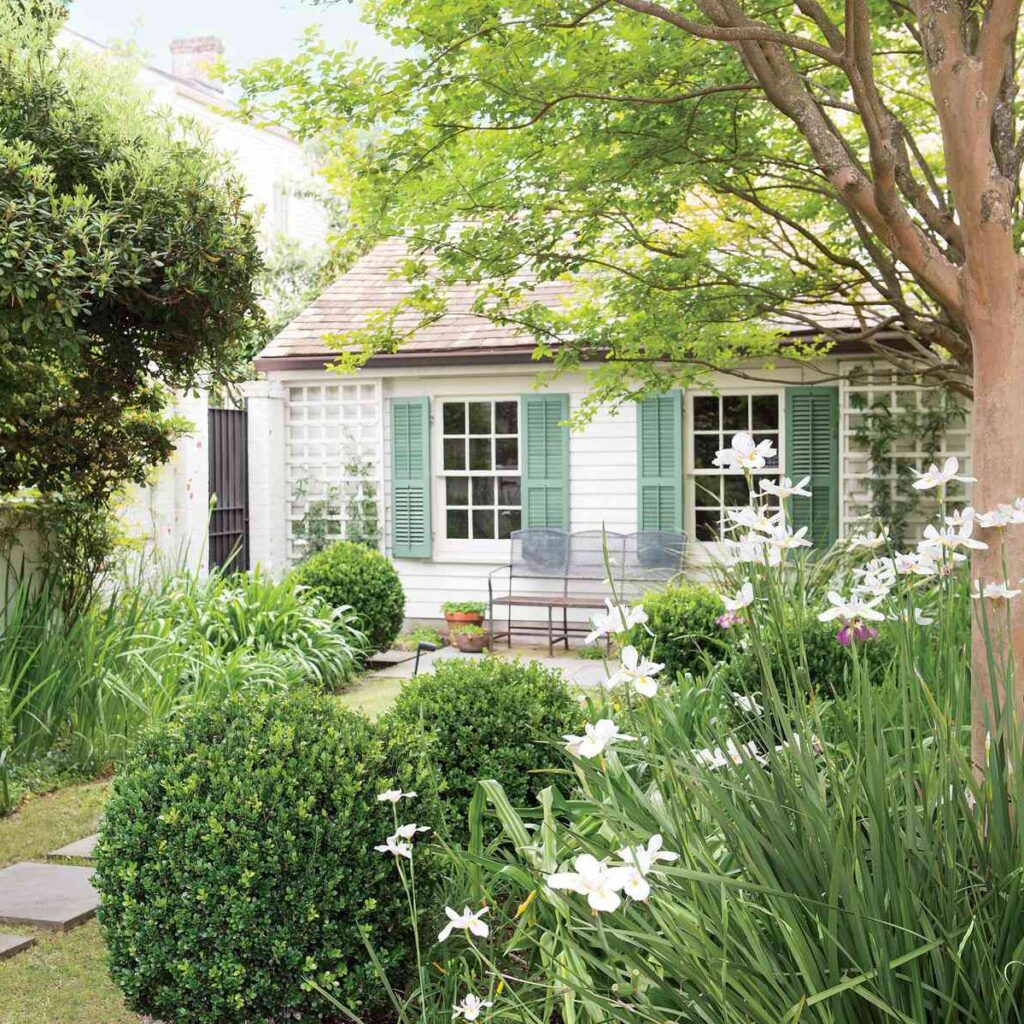
- Weeding
Regularly weed the bed to prevent invasive plants from competing with your flowers. - Mulching
Apply mulch around plants to conserve moisture, suppress weeds, and improve the bed’s appearance. - Pruning and Deadheading
Trim shrubs and remove spent blooms to encourage continuous flowering and keep the bed looking tidy. - Watering System
Consider installing a drip irrigation system for consistent, efficient watering. - Seasonal Refresh
Replace annuals each season and adjust plant combinations to keep the bed fresh and vibrant.
Conclusion
Island flower beds are much more than just collections of plants; they are artistic centerpieces that elevate the beauty and character of any yard. Their freestanding design gives homeowners the freedom to experiment with shapes, plant arrangements, and creative themes. By carefully planning the location, selecting plants that provide year-round interest, and maintaining them with care, island flower beds can transform ordinary lawns into enchanting outdoor retreats.
Whether you dream of a bold tropical island, a serene monochromatic design, or a vibrant pollinator haven, island flower beds offer endless opportunities for creativity. With the right vision and attention to detail, your yard can boast a centerpiece that not only turns heads but also provides joy season after season.
